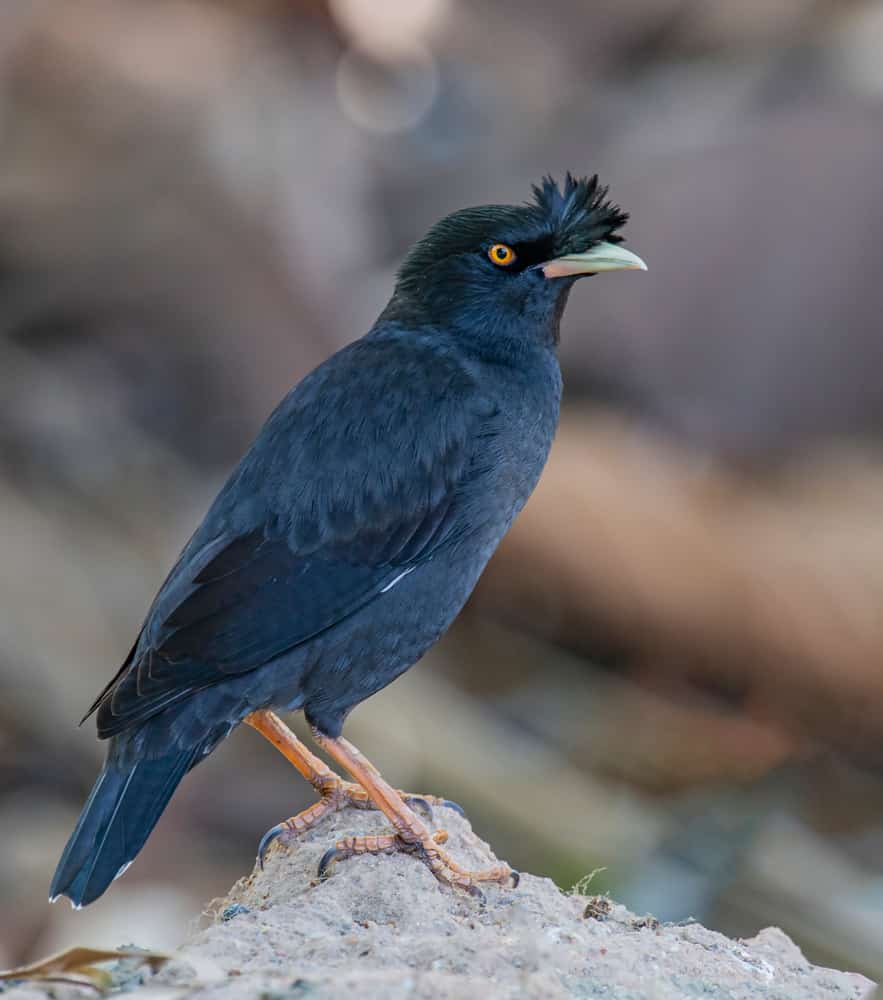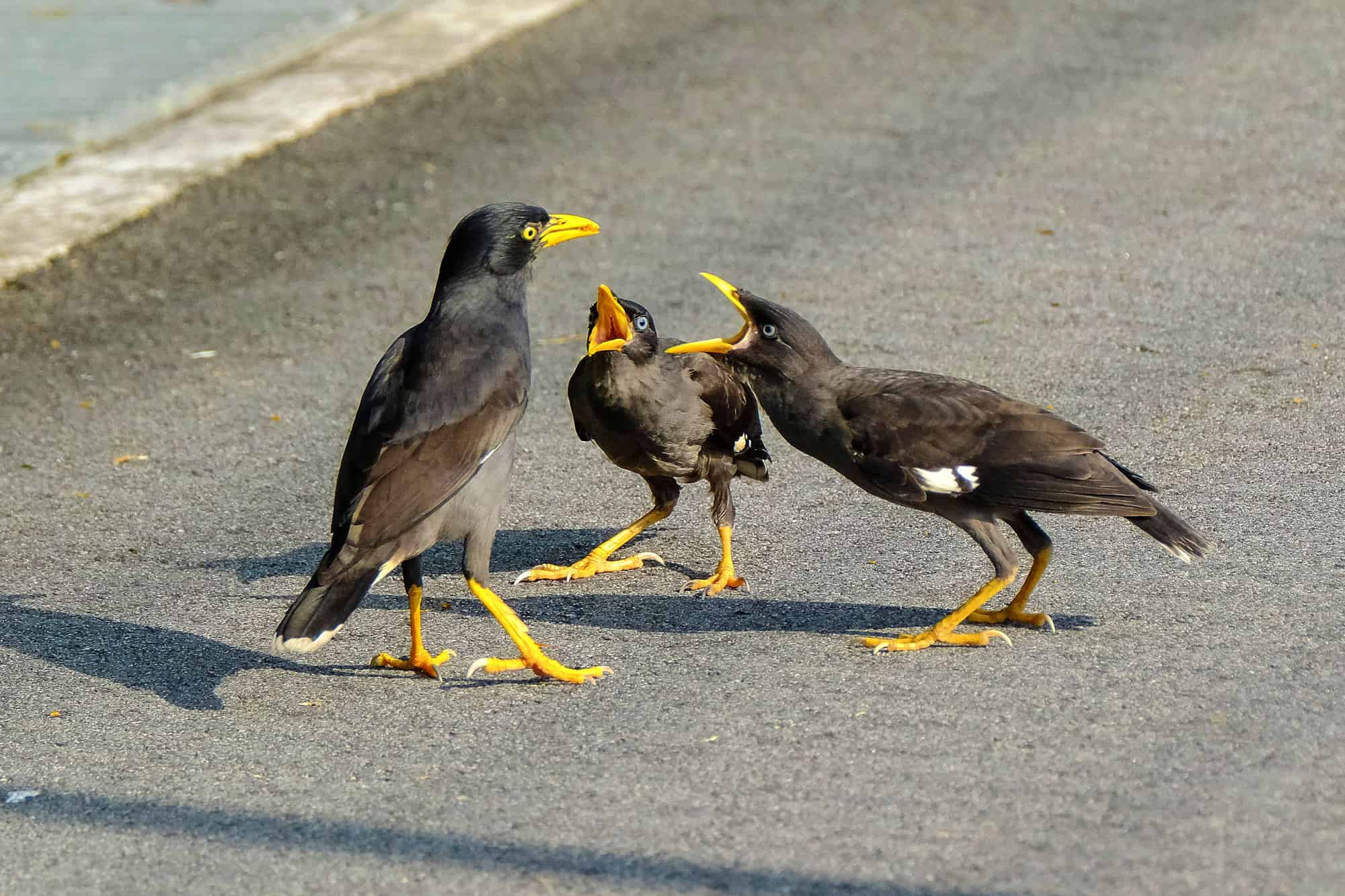Life is hard for baby birds when they realize they must catch their food! This little crested myna, like so many other chicks, is used to spotting worms just as they are dropped directly into his mouth. Thanks to the parent birds, he has not had to put much effort in – the food makes its way into his beak. That’s why he cannot determine what is happening with this worm. In this amazing clip, the chick follows the worm with his beak wide open, but the tasty snack insists on crawling away in the opposite direction! Take a look now at the hilarious footage.
Watch the Amazing Clip Now
Where Do Crested Mynas Normally Live?

Crested mynas have a tuft of feathers on their forehead.
©Jamil Bin Mat Isa/Shutterstock.com
The crested mynas are also known as Chinese starlings and are a native species of Southeast China and Indochina. The range starts in southeastern and central China and extends to Northern Indochina. They are common in the Yangtze Valley but have also been spotted in Burma, Taiwan, and Hainan.
They get their name from the tuft of feathers on their forehead resembling a crest. These birds are often spotted in both rural and urban habitats. In rural areas, they are most often seen in agricultural fields and orchards. They like to hang around near plowed fields to feed on the creatures exposed to the tilled soil. In urban areas, you will often spot them in the eaves of buildings, near roads and gardens, and even in parking lots.
Because they were popular as caged birds, some escapees have set up breeding populations in other countries, including Portugal!
What Do Crested Mynas Normally Eat?
These birds are omnivores, so they eat both plant and animal material. Most of their diet is made up of insects, supplemented with fruit and grains. If they can access manure and garbage, they’re happy to eat this, too! Overall, 40 percent of their diet is made up of meat and the remainder is plant material. When there are plenty of flies around, the proportion of meat protein in their diet increases. This often happens in September. Also, juvenile birds, like the one we see in this clip, eat more animal material as they need the protein to grow. We hope that this little bird finally figured out how to get the worm in his mouth!
Thank you for reading! Have some feedback for us? Contact the AZ Animals editorial team.








